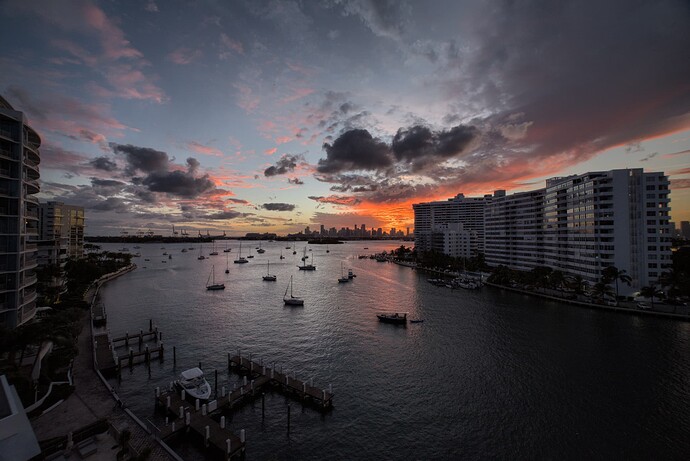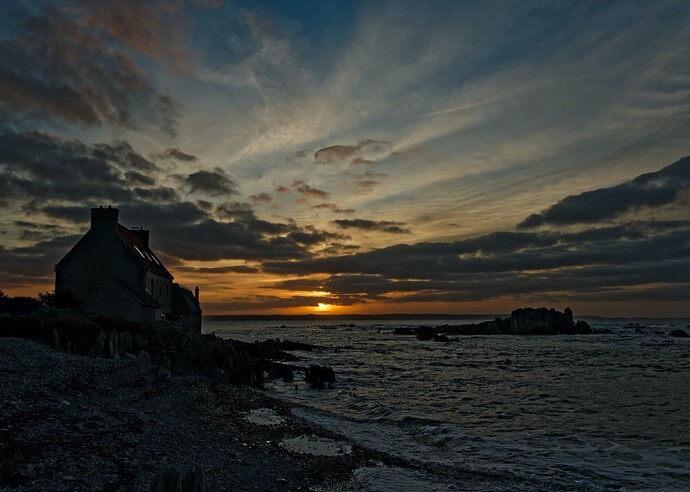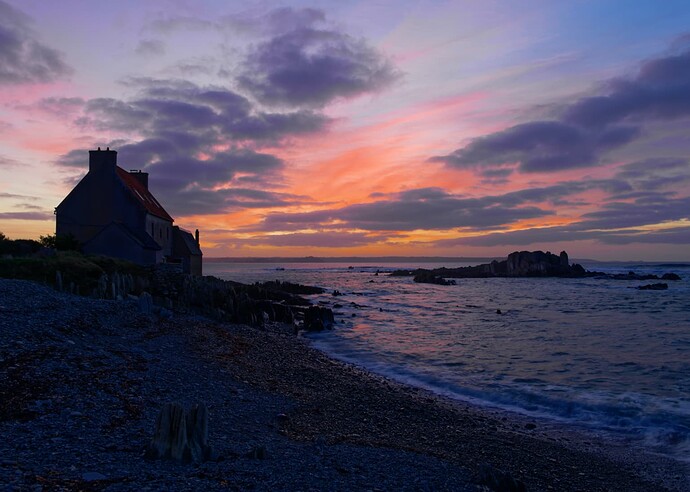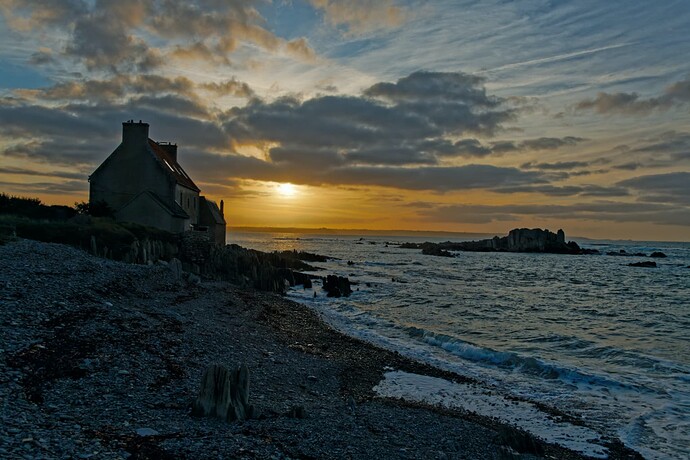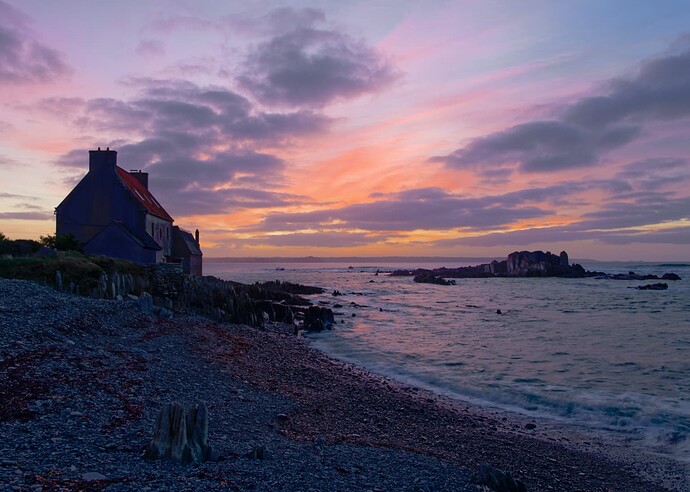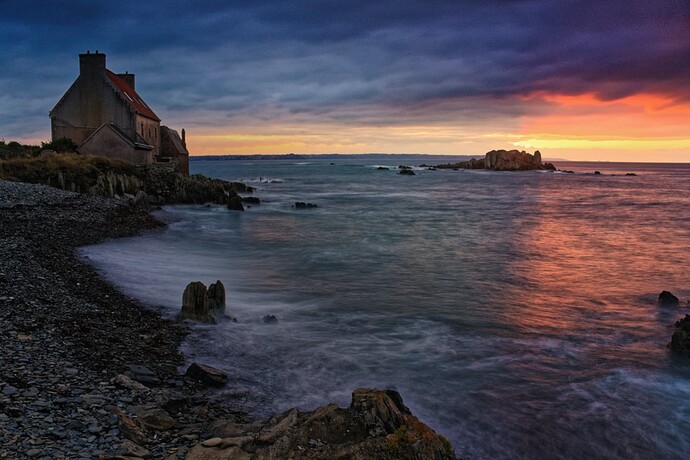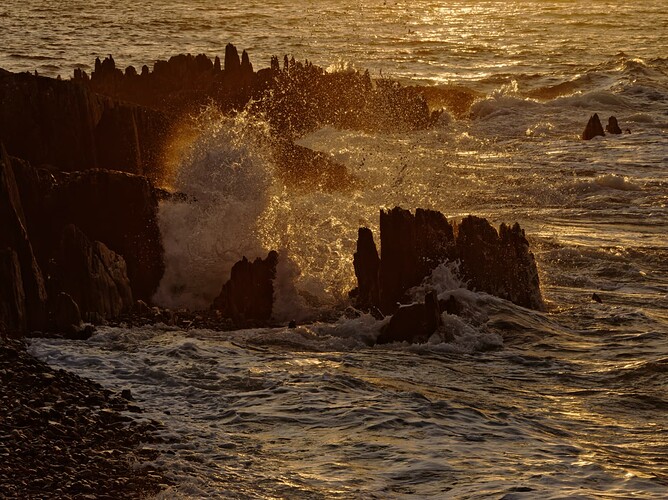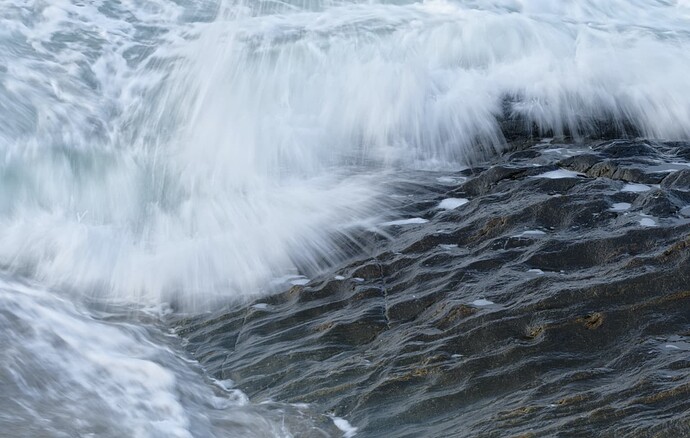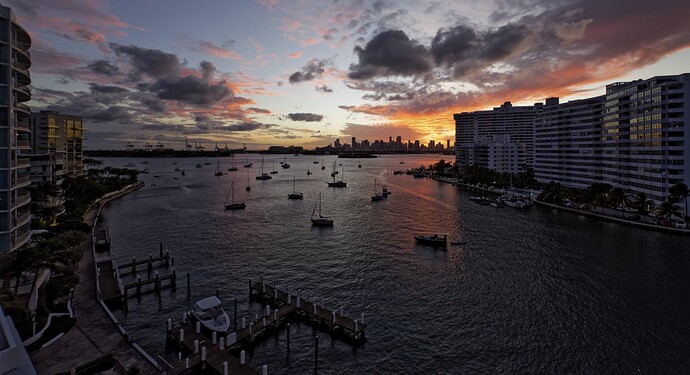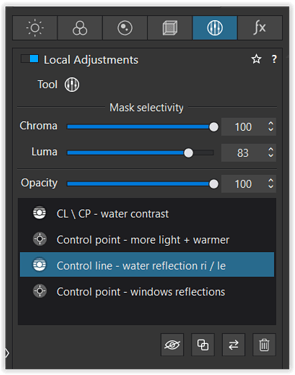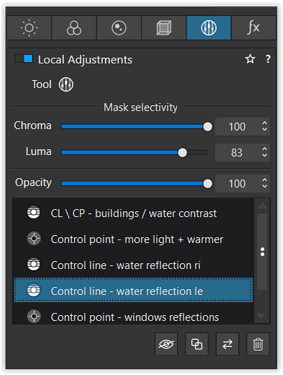Maybe “boring” is not the best word… I was taught long ago to look at my photos with my eyes “squinted” so all the details are gone, and to just look at “shapes”, and see if a photo was… well, “balanced”. When I look at this photo, I see all the fascinating action towards the right, and a large dark area at the left.
To my eyes, knowing nothing about the intent of the photo, this is what I “see”:
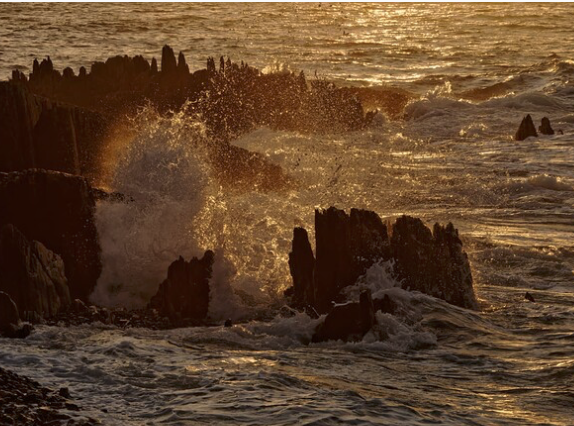
I guess I have my own way of looking at things nowadays, and I prefer “simple” compositions, which is why I preferred your sunset photo with the clouds all clustered together. Sadly, when I look through my viewfinder or screen, I have no control over what’s going on, only the ability to decide what goes in the photo, and what gets cropped out.
Shutter speed - it is strange and beautiful to see each drop of water so clearly, frozen in time. The “action” is captured perfectly, but the “movement” is lost. I know I “see” this with my eyes, but my brain “sees” things with a longer “shutter speed”, meaning water that is a little blurred.
Another way to look at this shows the beauty of doing exactly what Helen did, showing every bit of water frozen in time. Sort of like this:
From that point of view, the water is captured perfectly in Helen’s photo, even though I never aware of what I see IRL (In Real Life). Here’s an article on how I can learn to do this, now that I’m thinking of it:
https://www.adorama.com/alc/how-to-photograph-water-splashes/
And specifically in Helen’s photo, she captured the water with “back lighting” making it even more interesting. …and after re-thinking this, I now prefer exactly what Helen did capture, more so than what I was wondering about with a slower shutter speed.
